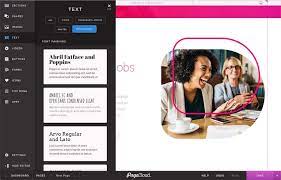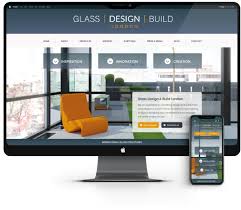The Art and Science of Web Design: Crafting Digital Experiences
In the digital age, a website is often the first point of contact between a business and its potential customers. As such, the importance of web design cannot be overstated. It’s an intricate blend of art and science that aims to create not only visually appealing but also functional and user-friendly online environments.
Understanding Web Design
Web design encompasses a variety of skills and disciplines in the production and maintenance of websites. The different areas of web design include graphic design, interface design, authoring, including standardised code and proprietary software; user experience design; and search engine optimisation.
At its core, web design is about problem-solving. Designers must navigate the challenges of combining form and function to create a site that looks great, reflects the brand’s identity, is easy to use, and performs well across all devices.
The Visual Elements
- Layout: This is how graphics, ads, and text are arranged. In the web world, a key goal is to help the viewer find the information they seek at a glance. This includes maintaining the balance, consistency, and integrity of the design.
- Colour: The choice of colours depends on the purpose and clientele; it could be simple black-and-white to multi-coloured design, conveying a brand’s persona or an individual’s personality.
- Graphics: Graphics can include logos, photos, clipart or icons, all of which enhance the web design. For user friendliness, these need to be placed appropriately, working with the colour and content of the webpage while not making it too congested or slow to load.
- Fonts: The use of various fonts can enhance a website’s design. Most web browsers can only read a select number of fonts known as “web-safe fonts”, so your designer will generally work within this widely accepted group.
- Content: Content and design can work together to enhance the message of the site through visuals and text. Written text should always be relevant and useful so as not to confuse the reader while giving them what they want so they will remain on the site. Content should be optimised for search engines but also be accessible for readers.
The Functional Elements
- User Experience (UX): A successful website focuses on guiding users through your site intuitively with item placements that make sense without much thought required from users – leading them from what they’re looking for to what you want them to see.
- User Interface (UI): UI deals with specific elements users interact with on your site such as buttons or images – ensuring that these are designed in such an accessible way that users aren’t left confused or frustrated when navigating your pages.
- Navigability: Intuitive navigation ensures people can find what they need quickly without getting lost in unnecessary pages or complex layouts – think simple navigation bars or search boxes.
- Sitespeed: No matter how beautiful your site looks if it takes ages to load you’ll lose visitors fast – so designers need to ensure sites are optimised for speed with compressed images or proper server-side scripting among other strategies.
- What is a web design?
- What’s web designer do?
- Can I teach myself web design?
- What are the 3 types of web design?
- Do you need a degree to be a web designer?
- What is Web design basics?
- What is web design example?
- How do I start web designing?
- What is the web design?
To conclude,
An effective website requires both aesthetic appeal backed by robust functionality. Great web designers marry innovative layout techniques with advanced coding skills ensuring sites look fresh yet operate smoothly under any circumstances. It’s this intersection between creativity & technology that makes web designing such an exciting field!
In modern times where online presence dictates success across many industries – mastering web designing principles becomes indispensable for anyone looking into engaging audiences effectively online!
Contact Us
If you’re interested in learning more about our approach to professional web design or if you need assistance crafting an exceptional digital experience for your brand or business please don’t hesitate to get in touch with us!
Essential Insights into Web Design: Understanding the Craft, Learning Paths, and Industry FAQs
What is a web design?
Web design refers to the process of creating and arranging elements on a website to ensure it is visually appealing, functional, and user-friendly. It involves a combination of graphic design, layout creation, content development, and user experience considerations. A well-executed web design not only reflects the brand’s identity but also enhances the overall user experience by making it easy for visitors to navigate the site and find the information they need. In essence, web design is about blending creativity with technical expertise to craft digital spaces that engage and connect with audiences effectively.
What’s web designer do?
A web designer is a skilled professional responsible for creating the visual elements of a website. They combine their artistic talents with technical expertise to design layouts, graphics, and user interfaces that enhance the overall look and feel of a website. Web designers work closely with clients to understand their needs and preferences, translating them into appealing and functional designs. From choosing colour schemes to selecting fonts and arranging content, web designers play a crucial role in shaping the online presence of businesses and individuals. Their work is essential in creating engaging and user-friendly websites that leave a lasting impression on visitors.
Can I teach myself web design?
Certainly! Teaching yourself web design is not only possible but also quite common in today’s digital age. With a plethora of online resources, tutorials, and courses available, aspiring designers can acquire the necessary skills and knowledge to excel in web design. By dedicating time to practice, experimenting with different tools and techniques, and staying updated on industry trends, self-taught designers can hone their craft and create stunning websites. While formal education can be beneficial, the ability to teach oneself web design showcases determination, creativity, and a passion for continuous learning in this dynamic field.
What are the 3 types of web design?
When it comes to web design, there are three main types that cater to different needs and preferences. The first type is responsive web design, which ensures that a website adapts seamlessly to various screen sizes and devices, providing a consistent user experience. The second type is adaptive web design, where the layout of the site adjusts based on the screen size and capabilities of the device being used. Lastly, there’s mobile-first web design, a strategy that prioritises designing for mobile devices first before scaling up to larger screens. Each type offers unique advantages and caters to specific user behaviours in the ever-evolving digital landscape.
Do you need a degree to be a web designer?
In the field of web design, having a degree is not always a strict requirement. While a formal education in web design or a related field can provide valuable knowledge and skills, many successful web designers have honed their craft through self-study, online courses, workshops, and practical experience. What truly matters in this industry is a strong portfolio showcasing your abilities and creativity. Clients and employers often value practical skills, creativity, problem-solving abilities, and a good understanding of design principles over formal qualifications. Continuous learning, staying updated with industry trends, and building a solid portfolio are key factors for success in the dynamic world of web design.
What is Web design basics?
Web design basics encompass the fundamental principles and elements that form the foundation of creating visually appealing and functional websites. It involves understanding concepts such as layout, colour theory, typography, and user experience. Web design basics also include knowledge of HTML, CSS, and other coding languages to structure and style web pages effectively. By mastering these fundamental aspects, designers can craft websites that not only look great but also provide a seamless and engaging user experience for visitors.
What is web design example?
An example of web design can be seen in a modern e-commerce website that features a clean and intuitive layout, eye-catching visuals, easy navigation, and seamless functionality. The website incorporates a cohesive colour scheme, high-quality images, clear typography, and strategically placed call-to-action buttons to guide users through the shopping process. This example showcases how effective web design combines aesthetics with user experience to create a visually appealing and user-friendly online platform.
How do I start web designing?
Embarking on a journey into web design can be both exciting and daunting for beginners. To start web designing, it’s essential to first gain a solid understanding of the fundamental principles of design, such as layout, colour theory, typography, and user experience. Familiarising yourself with popular design tools like Adobe XD or Figma can also be beneficial. Additionally, learning basic coding languages like HTML, CSS, and JavaScript will enable you to bring your designs to life on the web. Practice regularly by creating mock projects and seeking feedback from peers or online communities to refine your skills and grow as a web designer. Remember, patience and persistence are key as you navigate the dynamic world of web design.
What is the web design?
Web design refers to the process of creating and designing websites, encompassing various elements such as layout, graphics, colours, fonts, and content to deliver an engaging and user-friendly online experience. It involves a combination of artistic creativity and technical expertise to ensure that a website not only looks visually appealing but also functions effectively across different devices. Web design plays a crucial role in establishing a brand’s online presence and communicating its message to visitors in a clear and impactful manner. By focusing on user experience and interface design, web designers strive to create websites that are intuitive to navigate, visually appealing, and optimised for performance.




